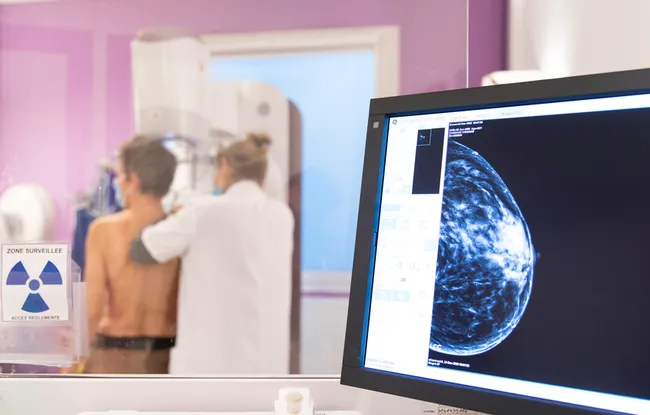Triple-negative breast Cancer (TNBC) is a unique and aggressive subtype of breast cancer, distinguished by the absence of three key receptors: estrogen, progesterone, and HER2. This need for receptors complicates treatment, as therapies targeting these proteins are ineffective against TNBC. As we explore the question, “What is TNBC skin disorder?” we need to understand the broader context of TNBC itself, its origins, and its implications for patients.
The Discovery and Classification of TNBC
The journey to understanding TNBC began with the recognition that breast cancer is not a singular disease but rather a collection of subtypes with distinct biological characteristics. Historically, breast cancer treatment followed a one-size-fits-all approach, which often led to suboptimal outcomes. Advances in molecular biology and genetics in the late 20th and early 21st centuries enabled scientists to categorize breast cancers based on their receptor status, paving the way for more personalized and effective treatment strategies.
TNBC was identified as a distinct entity when researchers discovered tumors that lacked expression of estrogen receptors (ER), progesterone receptors (PR), and the HER2 protein. This discovery highlighted the need for alternative treatment approaches, as these tumors did not respond to hormone therapies or HER2-targeted drugs, which were adequate for other breast cancer subtypes. The term “triple-negative” was coined to describe this group of tumors, emphasizing their unique receptor profile and treatment challenges.
Characteristics of Triple-Negative Breast Cancer
TNBC accounts for approximately 10-20% of all breast cancer cases, and it is known for its aggressive behavior and poor prognosis. This subtype tends to grow and spread more quickly than hormone receptor-positive or HER2-positive breast cancers, often resulting in a higher grade at diagnosis. TNBC is more prevalent in younger women, African American women, and those with a BRCA1 gene mutation.
The absence of hormone receptors and HER2 proteins in TNBC tumors means that conventional treatments, such as hormone therapy with tamoxifen or aromatase inhibitors, are ineffective. Similarly, drugs targeting HER2, like trastuzumab, do not benefit TNBC patients. Instead, treatment typically involves a combination of surgery, radiation, and chemotherapy. Despite the challenges, ongoing research efforts aim to identify new therapeutic targets and improve outcomes for individuals with TNBC.
The Genetic Underpinnings of TNBC
Genetic factors play a crucial role in the development and progression of TNBC. Mutations in the BRCA1 and BRCA2 genes are particularly relevant, as they significantly increase an individual’s risk of developing TNBC. These genes are responsible for repairing damaged DNA, and mutations can lead to the accumulation of genetic errors that drive cancer development.
Genetic testing is a valuable tool in identifying high-risk individuals for TNBC, enabling early detection and intervention. For those with BRCA mutations, preventive measures such as increased surveillance or prophylactic surgeries may be considered. Additionally, PARP inhibitors, a class of drugs targeting cancer cells with BRCA mutations, have shown promise in treating TNBC, offering new hope for patients with this challenging diagnosis.
The Search for New Treatments
The scientific community is making strides in understanding and treating TNBC, with many research initiatives underway to uncover novel therapeutic targets and improve patient outcomes. Advances in molecular biology and genomics have provided insights into the genetic and molecular mechanisms driving TNBC, paving the way for the development of targeted therapies.
One active research area involves identifying biomarkers to predict a patient’s response to specific treatments. By understanding the molecular profile of TNBC tumors, researchers hope to tailor therapies to individual patients, enhancing treatment efficacy and minimizing side effects.
Immunotherapy, which harnesses the body’s immune system to fight cancer, is another promising avenue for TNBC treatment. Clinical trials are exploring immune checkpoint inhibitors and other immunotherapeutic agents in TNBC patients, with some showing encouraging results. These therapies can improve survival rates and quality of life for individuals with TNBC.
TNBC and Skin Manifestations
While TNBC itself is not a skin disorder, some patients experience skin-related symptoms as a result of the cancer or its treatment. These symptoms can include skin rashes, irritation, or changes in pigmentation, which may occur due to chemotherapy or radiation therapy. Managing these skin manifestations is essential to comprehensive care for TNBC patients.
Understanding the connection between TNBC and skin symptoms is crucial for providing holistic care. Oncologists and dermatologists must work together to address these side effects, ensuring patients receive effective cancer treatment and relief from skin-related discomfort. By doing so, healthcare providers can enhance the well-being of individuals with TNBC.
The Human Impact of TNBC
Beyond the scientific and medical aspects, TNBC has a profound impact on the lives of those diagnosed with the disease and their families. The aggressive nature of TNBC, coupled with limited treatment options, can create significant emotional and psychological challenges for patients. Support from healthcare providers, family, and friends is essential in helping individuals navigate the complexities of their diagnosis and treatment journey.
Patient advocacy groups and support networks are vital in raising awareness about TNBC and providing resources for those affected by the disease. These organizations offer educational materials, support groups, and advocacy initiatives to improve access to care and advance research efforts.
The Path Forward: Hope and Innovation
As research into TNBC continues, there is hope for new and innovative treatment options that can improve patient outcomes. Collaboration among researchers, clinicians, and patients will be key to progress in the fight against this aggressive disease. By staying informed and engaged, we can support those affected by TNBC and contribute to the collective effort to find a cure.
In conclusion, Triple-Negative Breast Cancer is a distinct and challenging subtype of breast cancer that requires a multifaceted approach to treatment and care. Understanding its origins, characteristics, and genetic underpinnings is crucial in developing effective therapies and improving patient outcomes. While TNBC remains a formidable adversary, ongoing research and advancements in cancer biology offer hope for new and innovative treatment options. As we reflect on what is TNBC skin disorder and its connection to the broader disease, it becomes clear that a comprehensive and compassionate approach is essential in addressing the unique challenges faced by patients and their families.

